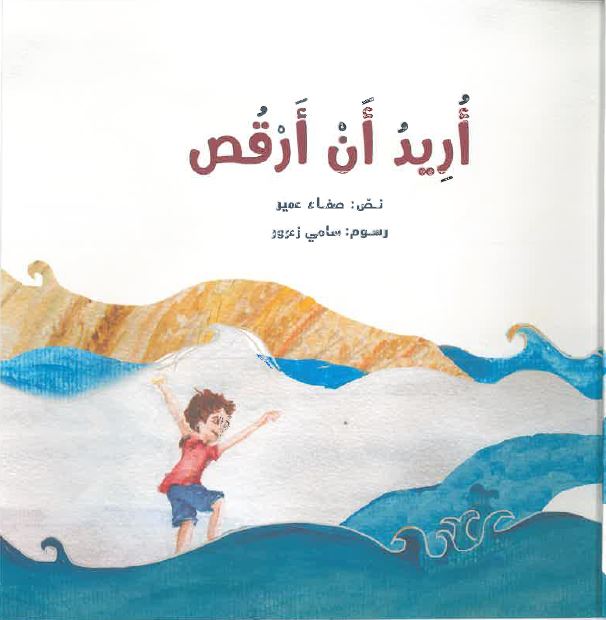
“I want to dance/ I want to fly/ to spread my wings like a bird…” a rhymed text that celebrates dance as an innate and humanistic expression of child’s joy.

“I want to dance/ I want to fly/ to spread my wings like a bird…” a rhymed text that celebrates dance as an innate and humanistic expression of child’s joy.
“I want to dance” says the child, expressing happiness in the spontaneous, humane and natural way of both modern and ancient cultures. Dancing is a common cultural expression in the Arab culture, whether in a group or individual setting, among children and adults. Children dance at ...
Read More
“I want to dance” says the child, expressing happiness in the spontaneous, humane and natural way of both modern and ancient cultures.
Dancing is a common cultural expression in the Arab culture, whether in a group or individual setting, among children and adults. Children dance at their birthday parties, and adults dance on happy occasions; they enjoy and express their feelings, communicate with each other, and develop skills in coordinating body movement and rhymes.
As the known poet, Elia Abu Madi says, “Be beautiful to see the world beautiful”, and this book adds “Be happy to see the world dancing!”.
Dear Parents,
We share with you some ideas for activities regarding the book:
الرّقص تعبيرٌ فطريّ عن الفرح، وهو موجود في جميع ثقافات الشّعوب، القديمة والحديثة. الرّقص أيضًا وسيلةٌ للتّنفيس عن المشاعر والضّغوطات النّفسيّة الّتي يشعر بها الكبير والصّغير على السّواء، فهو، بهذا المعنى، طقسٌ علاجيّ ذاتيّ، يقوم به الإنسان للتّخفيف عن نفسه.
والرّقص شكلٌ من أشكال التّواصل الاجتماعيّ، يشبه الحوار بين اثنين أو أكثر، فيتطلّب من الرّاقص أن "يصغي" للرّاقصين الآخرين، وأن يردّ عليهم بحركات جسمه. بهذا المعنى، يساعد الرّقص الطّفل على إدراك حضور الآخرين في حيّزه المكاني، وعلى التّعامل معهم.
يحبّ الأطفال أن يرقصوا، وهم يتمايلون عند سماعهم الموسيقى، ويعبّرون عن فرحهم بالقفز أو الدّوران أو تحريك الذّراعين. لعلّك تلاحظين أنّ بعض أطفال روضتك لا "يرقصون" على النّحو السّائد في عالمنا- نحن الكبار؛ إذ إنّ الرّقص يتطلّب مهارات متطوّرة في التّناسق الحركي-السّمعي، تؤدي إلى التّناغم بين الإيقاعات الموسيقيّة وحركة الجسم، وهذه مهارات ما زالت طور النّضوج لدى أطفال الرّوضة.
كتاب "أريد أن أرقص" هو كتابٌ يحتفي بالفرح وبتعابيره المختلفة من غناء، ورقص، وغيرها. وهو في ذلك يُكمل كتاب مؤلّفته السّابق- أحلى الأغاني- والّذي وزّع على أطفال الرّوضة في عامّي 2016-2017.
نشاركك بعض الأفكار للنّشاط مع الأطفال حول الكتاب: